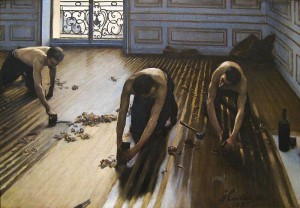Value scales and color wheels are understood and used by a majority of artists, but how many recognize and incorporate varying surfaces as part of their visual story? How, for example, do we define the difference between ocean and shore? Too often the ocean is described solely by color, value and forms, overlooking the inherent qualities of sand and sea.
The inherent qualities surely include color, value and form, but we must recognize how the varied surfaces of surf and shore differ in order to tell the full tale. So how do we define surface? Imagine a surface scale with a range from most reflective to the dullest, or MIRROR to BLACK VELVET.
This tutorial addresses the issue of surface as an essential ingredient in visual literacy. If you’re sure you are visually literate, check out your credentials with a ten minute exposure to this lesson. You’ll be opening a few new doors.
(Editor’s suggestion: After viewing, use the video controls to pause or replay any section to study this fascinating phenomenon in more depth.)
Two paintings Dick has presented as examples of masterful depiction of surface are below. From a 2012 watercolor class and a 2014 critique group.
- Arnolfini Wedding – Jan van Eyck
- The Floor Scrapers – Gustave Caillebotte
See the handouts below for more explanation and examples.
[gview file=”https://dicknelsoncolor.com/wp-content/uploads/2012/11/Surface.pdf”]
[gview file=”https://dicknelsoncolor.com/wp-content/uploads/2012/11/Surface-QA.pdf”]

